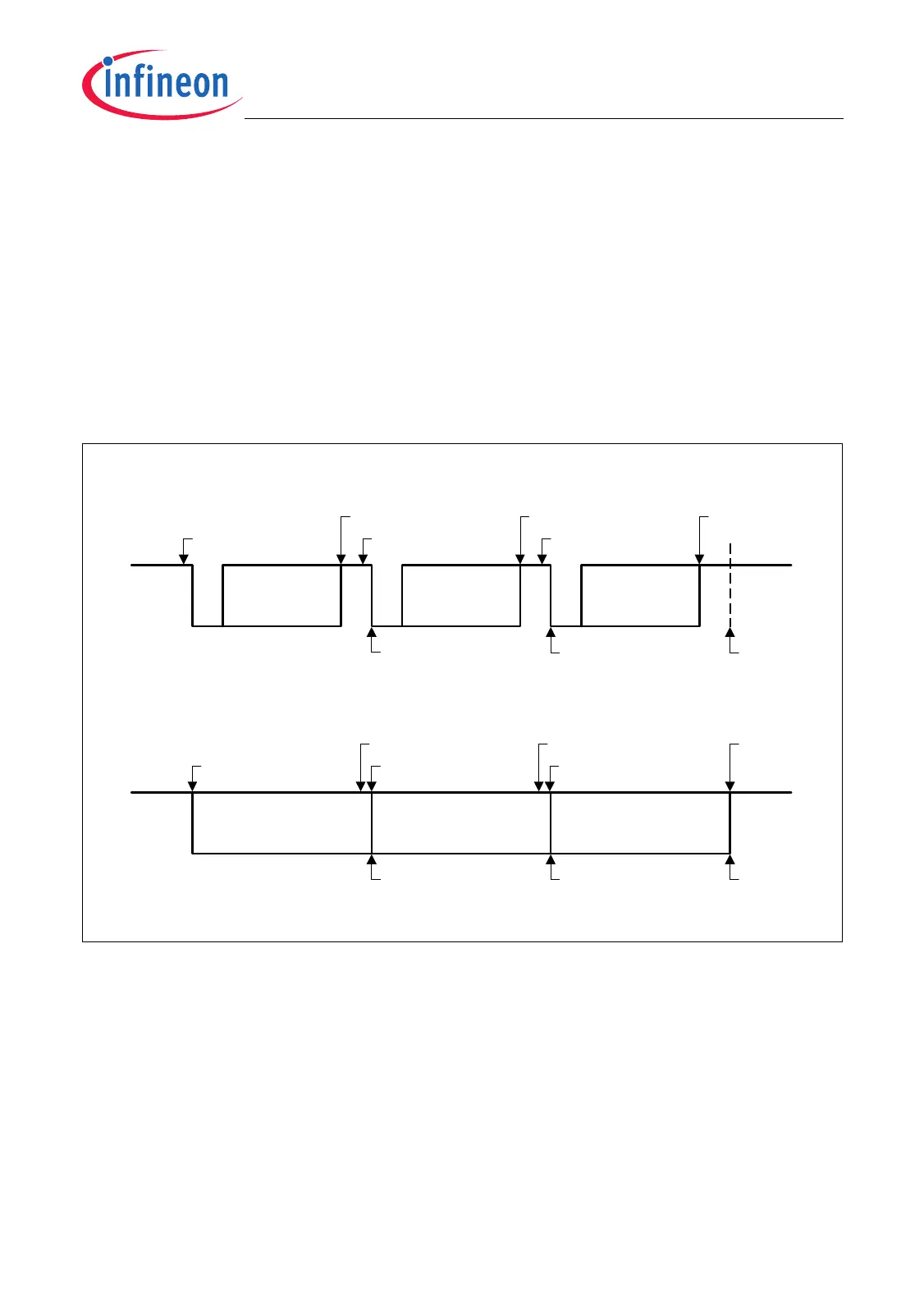TC1796
Peripheral Units (Vol. 2 of 2)
Asynchronous/Synchronous Serial Interface (ASC)
User’s Manual 19-18 V2.0, 2007-07
ASC, V2.0
For single transfers, it is sufficient to use the transmitter interrupt (TIR), which indicates
that the previously loaded data has been transmitted, except for the last bit of an
asynchronous frame.
For multiple back-to-back transfers, it is necessary to load the following piece of data at
least before the last bit of the previous frame has been transmitted. In Asynchronous
Mode, this leaves just one bit-time for the handler to respond to the transmitter interrupt
request; in Synchronous Mode, it is entirely impossible.
Using the Transmit Buffer Interrupt (TBIR) to reload transmit data provides the time
necessary to transmit a complete frame for the service routine, as TBUF may be
reloaded while the previous data is still being transmitted.
Figure 19-10 ASC Interrupt Generation
As shown in Figure 19-10, TBIR is an early trigger for the reload routine, while TIR
indicates the completed transmission. Software using handshake should, therefore, rely
on TIR at the end of a data block to ensure that all data has been transmitted.
Idle
Start
Stop
Start
Stop
Start
Stop
Idle
MCT05771
Asynchronous Mode
TBIR TBIR
TIR
RIR
TBIR
TIR TIR
RIR RIR
Idle Idle
TBIR TBIR
TIR
TBIR
TIR TIR
RIR RIR RIR
Synchronous Mode

